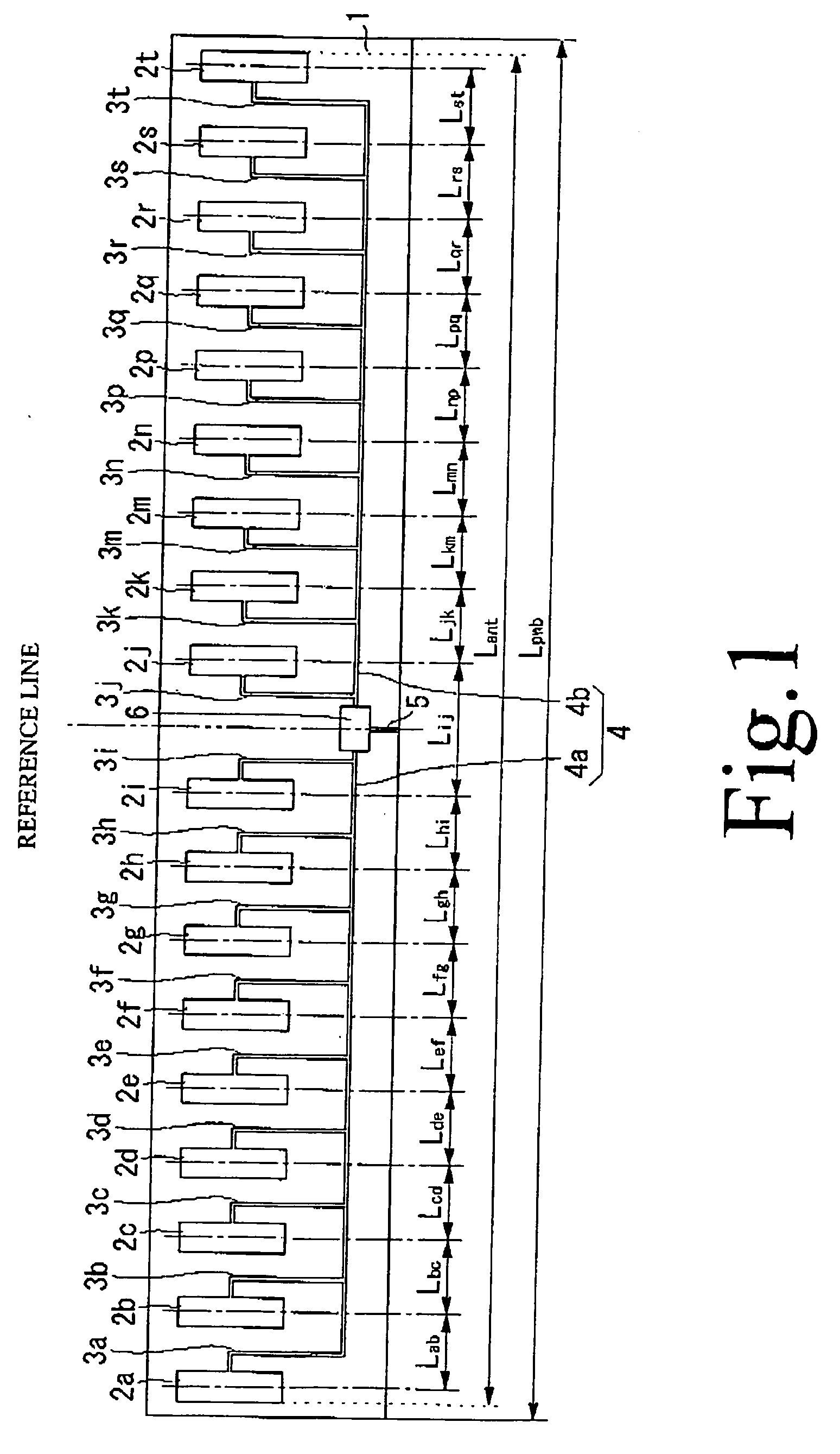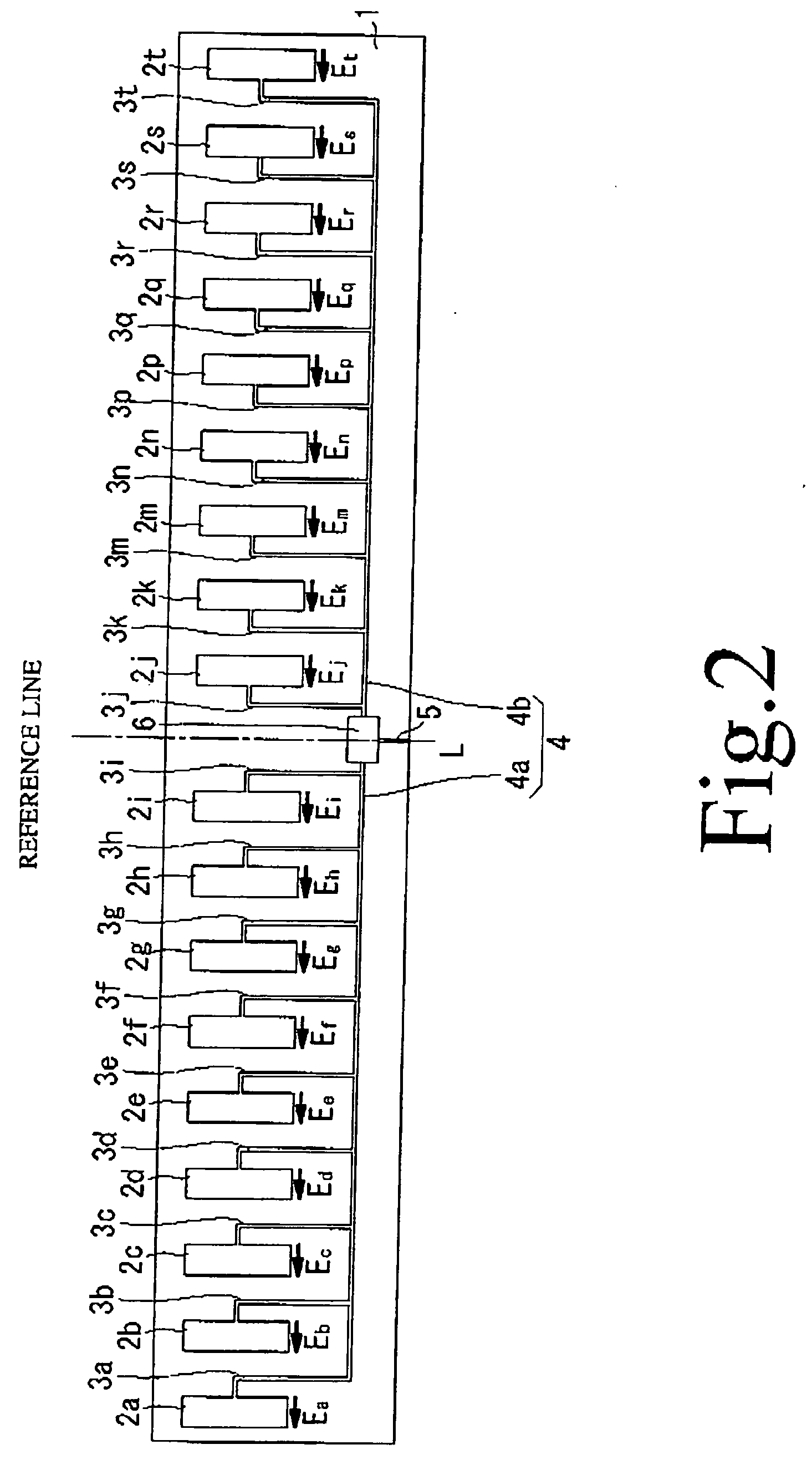Array antenna
- Summary
- Abstract
- Description
- Claims
- Application Information
AI Technical Summary
Benefits of technology
Problems solved by technology
Method used
Image
Examples
first embodiment
[0026] An array antenna according to the invention is now described with reference to FIGS. 1 to 3 and Tables 1 and 2.
[0027]FIG. 1 is a plan view generally showing the configuration of the array antenna according to the first embodiment of the invention. Referring to FIG. 1, the array antenna includes a substrate 1 having a rectangular shape in plan view and a plurality of antenna elements 2a-2t formed on a surface of the substrate 1, the antenna elements 2a-2t being arranged in a predetermined array pattern. The array antenna further includes a plurality of secondary feeder lines 3a-3t, a primary feeder line 4, an outgoing line 5 and a phase-inverting distributor 6 which are also formed on the surface of the substrate 1. The substrate 1 is made of a dielectric material while the antenna elements 2a-2t, the secondary feeder lines 3a-3t, the primary feeder line 4 and the outgoing line 5 are made of a patterned conductor layer (including conductor lines and electrodes) formed on the s...
second embodiment
[0046] An array antenna according to the invention is now described with reference to FIG. 4 and Tables 3 and 4.
[0047] The array antenna of the second embodiment has basically the same configuration as the array antenna of the first embodiment (refer to FIG. 1) except that the intervals between the successive antenna elements 2a-2t and the amounts of attenuation in the individual antenna elements 2a-2t in the array antenna of the second embodiment are varied from those of the first embodiment.
[0048] Table 1 shows the intervals Lab-Lst between the successive antenna elements 2a-2t, and Table 2 shows the amounts of attenuation from the phase-inverting distributor 6 to the individual antenna elements 2a-2t including attenuation in the primary feeder line 4 and the respective secondary feeder lines 3a-3t.
TABLE 3SymbolElement-to-element interval (mm)Lab25.65Lbc23.40Lcd21.90Lde21.65Lef21.75Lfg21.65Lgh22.15Lhi23.50Lij25.65Ljk23.50Lkm22.15Lmn21.65Lnp21.75Lpq21.65Lqr21.90Lrs23.40Lst25.65
[...
PUM
 Login to View More
Login to View More Abstract
Description
Claims
Application Information
 Login to View More
Login to View More - R&D
- Intellectual Property
- Life Sciences
- Materials
- Tech Scout
- Unparalleled Data Quality
- Higher Quality Content
- 60% Fewer Hallucinations
Browse by: Latest US Patents, China's latest patents, Technical Efficacy Thesaurus, Application Domain, Technology Topic, Popular Technical Reports.
© 2025 PatSnap. All rights reserved.Legal|Privacy policy|Modern Slavery Act Transparency Statement|Sitemap|About US| Contact US: help@patsnap.com



